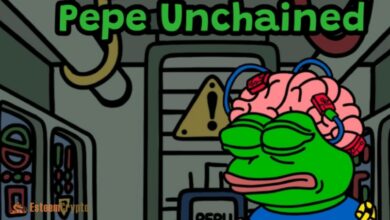Blockchain Basics Your Ultimate Beginner’s Guide

Blockchain basics are no longer just the domain of cryptographers and tech geeks — they represent foundational knowledge for many professionals, entrepreneurs, and even curious individuals. But what does “blockchain” really mean in plain terms? How do blocks link together? Why is there so much hype, and what are the real-world uses and limitations?
This article dives into blockchain basics in a clear, human-readable way. You’ll learn the architecture, the major components (such as consensus, nodes, smart contracts), benefits and challenges, and how blockchain is being applied today — all while building your vocabulary with LSI keywords like distributed ledger technology, cryptocurrency infrastructure, decentralization, consensus algorithm, and smart contract ecosystem. By the end, you’ll not only understand the core ideas but also gain insight into the future direction of this key digital innovation.
What Is Blockchain? The Core Concept
At its heart, blockchain is a type of distributed ledger technology (DLT) that records transactions or data in blocks, which are cryptographically linked in a chain. Unlike centralized databases controlled by a single authority, a blockchain spreads copies of the ledger across multiple nodes in a peer-to-peer (P2P) network. Because each block references the previous block’s cryptographic hash, tampering with a record would break the chain’s integrity.
Think of blockchain as an append-only log: once information is recorded in a block and confirmed, it is extremely difficult to change retroactively. This gives rise to immutability, one of the hallmark properties of blockchains.
A few core attributes help define the nature of blockchain:
-
Decentralization: No central authority has full control — decisions, validation, and storage are collectively managed by nodes.
-
Transparency and public auditability: On many blockchains (public or permissionless ones), anyone can inspect the ledger and verify transactions.
-
Security through cryptography: Transactions are secured through cryptographic hashing and public/private key pairs.
-
Consensus: All participating nodes agree on a single version of the ledger via consensus protocols (e.g., Proof of Work or Proof of Stake).
-
Smart contract support (in many chains): Programmable logic (contract code) can execute automatically when certain conditions are met, enabling decentralized applications (dApps).
Without understanding these structural ideas, the phrase blockchain basics remains abstract. The real value lies in seeing how these components interplay in real networks.
Key Components of Blockchain Basics

To deepen your understanding, let’s explore the essential building blocks behind the concept of blockchain basics.
Blocks, Transactions, and Hashing
Each block contains a batch of transactions, a timestamp, a reference (hash) to the previous block, and additional metadata. A Merkle tree is often used inside each block to efficiently verify individual transactions without having to store the full set.
When a new transaction is proposed, nodes validate it (checking signatures, balances, rules), and then the transaction is included in a candidate block. The block is hashed — the resulting hash becomes part of the next block’s linking data. This chain of hashes ensures that altering any single block changes its hash, thus breaking the link for all subsequent blocks.
Nodes, Full Nodes, and Light Clients
A node is any computer that participates in the blockchain network. Different types include:
-
Full nodes: Maintain a complete copy of the blockchain, validate every block and transaction, and enforce consensus rules.
-
Light clients (or SPV clients): Do not store the full blockchain; they query full nodes for confirmation proofs and rely on simplified mechanisms.
Nodes communicate over P2P protocols and broadcast new transactions and blocks across the network to reach consensus.
Consensus Mechanisms
One of the trickiest parts of blockchain is achieving agreement among distributed nodes. Two widely used mechanisms are:
-
Proof of Work (PoW): Nodes (miners) compete by solving computational puzzles. The first to solve it proposes a block that others verify. This mechanism underlies Bitcoin and was used historically in many blockchains.
-
Proof of Stake (PoS): Validators are selected in proportion to their stake (ownership) in the network. Ethereum, for example, migrated to PoS to improve energy efficiency.
Each consensus method has trade-offs in security, decentralization, speed, and energy consumption.
Smart Contracts and dApps
Smart contracts are self-executing code stored on the blockchain. When predefined conditions are met, they run automatically. These contracts enable decentralized applications (dApps), token issuance, automated agreements, and more. In systems like Ethereum, the smart contract layer turns a blockchain from a simple ledger into a programmable ecosystem.
Layers and Scaling (Layer-2, Sharding, Sidechains)
As adoption grows, blockchains face scaling challenges. To mitigate that, architectures use layer-2 networks, sharding, and sidechains:
-
Layer-2 solutions: Offload transactions from the main chain (e.g., rollups, state channels) to increase throughput and reduce cost.
-
Sharding: Partition the blockchain’s state into segments (shards) so nodes only manage part of the data.
-
Sidechains: Independent chains that interoperate with the main chain, often used for specific tasks or experiments.
These techniques build upon the core blockchain basics, enabling more performance without sacrificing security.
Why Blockchain Basics Matter: Use Cases and AdvantagesBlockchain basics are not mere academiexercisessethey it underpin several real-world applications and innovations. Below, we explore some of the most prominent use cases and benefits.
Cryptocurrencies and Payment Systems
Perhaps the most well-known use case is cryptocurrencies such as Bitcoin and Ethereum. By leveraging blockchain, these systems allow peer-to-peer transfers of value without a central intermediary like a bank. Transaction records are permanently stored across the network, enabling transparency and censorship resistance.
Supply Chain and Provenance
In industries like food, pharmaceuticals, and luxury goods, blockchain is used to track the provenance of items. Each leg of the supply chain can be recorded immutably so consumers and regulators can verify origin, handling, and authenticity. The distributed ledger helps reduce fraud, counterfeiting, and errors.
Decentralized Finance (DeFi) and Tokenization
The DeFi movement enables financial services (lending, borrowing, exchanges, staking) through smart contracts. Blockchain basics (trustless execution, transparency, composability) are critical to enabling permissionless, programmable finance. Tokenization allows real assets (real estate, art, securities) to be represented as digital tokens on-chain.
Identity Management and Credentials
Blockchain can enable decentralized identity systems, where individuals control their own credentials without relying on central authorities. Educational degrees, certifications, and other credentials can be stored on the chain in verifiable form, reducing fraud in identity verification.
Voting, Governance, and DAOs
Many projects use blockchain for secure voting systems and governance models. Decentralized Autonomous Organizations (DAOs) rely on token-holder voting for decision-making, enabling collective ownership and management of shared resources or protocols.
Data Integrity and Timestamping
Because blockchains can provide immutable timestamped records, they are used for document notarization, proof of existence, and audit trails. This is especially valuable in legal, tax, and regulatory contexts.
The key takeaway: the fundamentals you learn in blockchain basics support all of these applications. Without grasping how blocks, consensus, and smart contracts interplay, one cannot effectively evaluate or build these systems.
Challenges, Risks, and Misconceptions in Blockchain Basics
While learning blockchain basics is empowering, it’s also essential to be aware of the limitations, tradeoffs, and misconceptions.
Scalability and Throughput
Public blockchains often face trade-offs between decentralization, security, and throughput. High transaction volume can lead to congestion and high fees. Layer-2 solutions help, but they introduce additional complexity and potential trust assumptions.
Energy Consumption (in PoW Models)
Proof-of-work blockchains consume large amounts of electricity, which has led to environmental criticisms. This is one reason many networks are shifting to Proof of Stake or more energy-efficient consensus.
Governance and Upgrades
When a blockchain needs to upgrade, it can be complex. Deciding on protocol changes (hard forks, soft forks) can lead to splits in the community, fragmentation, or even network risk.
Security Vulnerabilities
Though blockchains offer robust security, they are not immune to issues. Smart contract bugs, 51% attacks (if a party gains majority control), and side-channel vulnerabilities pose real risks. Also, private keys must be managed securely — if lost, assets may be irretrievable.
Misconceptions: “Blockchain solves everything”
One common misconception is that blockchain is a panacea. In many cases, a traditional database suffices. Blockchain is best suited for scenarios involving decentralization, trustless environments, or multi-party coordination without a central authority.
Understanding these trade-offs is part of mastering blockchain basics in a realistic light.
From Basics to Implementation:How to Enter the Blockchain World

Once you know the core blockchain basics, how do you start applying them? Here’s a practical roadmap.
Choose a Blockchain Platform
Pick a blockchain suited to your needs. For example:
-
Ethereum / EVM-compatible chains: Support smart contracts and have large ecosystems.
-
Solana, Polkadot, and Cardano offer different performance, governance, or features.
-
Permissioned blockchains (e.g., Hyperledger, Corda): Useful for enterprise/private scenarios.
Your choice influences tools, language, and design constraints.
Learn the Tooling and Development Stack
Become familiar with wallets, node software, development frameworks (e.g, Truffle, Hardhat, Substrate), and programming languages (Solidity, Rust, Vyper). Begin by deploying simple contracts, testing on testnets, and interacting with deployed contracts.
Design Smart Contracts Thoughtfully
When building contracts, think about security best practices, upgradeability, gas efficiency, and modular design. Use audits, testing, and community review to mitigate risks.
Integrate with Off-chain Systems
Most blockchain systems need to interact with off-chain data (oracles), APIs, or traditional systems. Designing interfaces, bridging, or cross-chain communication is critical.
Focus on User Experience
Blockchain applications often suffer from poor UX (wallet setup, gas fees, onboarding). Reducing friction, providing abstractions, and error handling help adoption — an essential perspective when applying blockchain basics to real products.
Stay Updated and Contribute
Blockchain is fast-evolving. Follow whitepapers, participate in developer communities, read protocol updates, and experiment with new modules. Over time, you’ll internalize advanced design patterns beyond blockchain basics.
Future Trends Emerging from Blockchain Basics
Once you understand blockchain basics, you can begin to see patterns in where the technology is heading.
Interoperability and Cross-Chain Communication
Projects like Polkadot, Cosmos, and protocols like Wormhole are pushing seamless communication between blockchains. The future is one where blockchains — not silos — connect and exchange value securely.
Zero-Knowledge Proofs and Privacy Scaling
Zero-knowledge proofs (ZK proofs) enable verification without revealing underlying data, allowing privacy-preserving transactions. Moreover, ZK rollups are scaling techniques that bundle many transactions off-chain and post succinct proofs on the base chain.
Decentralized Identity (DID) and Self-Sovereign Identity
The idea of individuals controlling their own identity credentials via blockchain is gaining traction, especially as data privacy and regulatory pressures increase.
On-chain Governance and Autonomous Protocols
The DAO model will evolve, with more protocols embedding governance systems directly in the chain logic. Token-based economics and governance mechanisms will become more sophisticated.
Web3, Metaverse, and Tokenized Ecosystems
Blockchain basics feed into the construction of Web3 applications, NFTs, virtual worlds, and token economies. These systems extend beyond finance into social, cultural, and creative sectors.
Integration with AI, IoT, and Big Data
Blockchain combined with AI can enable decentralized intelligence, while the Internet of Things (IoT) benefits from tamper-proof audit logs and autonomous device coordination. Big data applications can use blockchain for data integrity and provenance. These directions all build atop the core blockchain basics. By mastering fundamentals, you’re better equipped to understand, audit, or contribute to the evolving landscape.
Also Read: Blockchain Security: An In-depth Explanation By Esteemcrypto
Conclusion
Mastering blockchain basics is your gateway to understanding one of the most transformative technologies of our age. From the architecture of blocks and nodes, through consensus, smart contracts, scaling, and security, you’ve seen how the pieces fit together. You’ve also seen how these fundamentals power real-world applications across finance, supply chains, identity, governance, and more. While challenges like scalability, energy consumption, governance, and security loom large, smart protocols and layered solutions are actively evolving to address them.
Whether your interest lies in building dApps, working in crypto, or simply understanding the underpinnings of Web3 and decentralized systems, the concepts covered here provide a solid foundation. Keep exploring, testing, and engaging with communities — your journey beyond blockchain basics is just beginning.
FAQs
Q: What are the most important terms to master when learning blockchain basics?
When starting, focus on terms like block, node, hash, consensus (PoW / PoS), smart contract, decentralization, distributed ledger, public key / private key, and immutability. These form the vocabulary you’ll repeatedly use in deeper study and development.
Q: How secure are blockchains in practice?
Blockchains are highly secure due to cryptographic techniques, decentralized validation, redundancy, and immutability. However, weaknesses arise from smart contract bugs, private key theft, or network-level attacks (e.g., 51% attack). Security is not absolute — best practices, audits, and careful design are critical.
Q: Can blockchain basics be applied in private or permissioned networks, too?
Yes. Many enterprises adopt permissioned blockchains where participants are controlled. While they might forsake full decentralization, the same principles — blocks, consensus, cryptographic linking — still apply, adapted for trusted environments.
Q: Which is better for beginners: Ethereum, Solana, or another blockchain?
Ethereum (or its EVM-compatible chains) is often a good starting point due to its large developer community, mature tooling, and extensive documentation. Solana and others offer performance advantages, but may have higher barriers to entry. Choose based on your project goals and ecosystem support.
Q: How fast should I move beyond blockchain basics and into advanced topics?
There’s no fixed timeline. Once you feel comfortable with the core concepts and small experiments (deploying contracts, reading consensus flows), you can gradually explore scaling techniques, interoperability, zero-knowledge proofs, and governance. The more you build, the deeper your learning will go.




